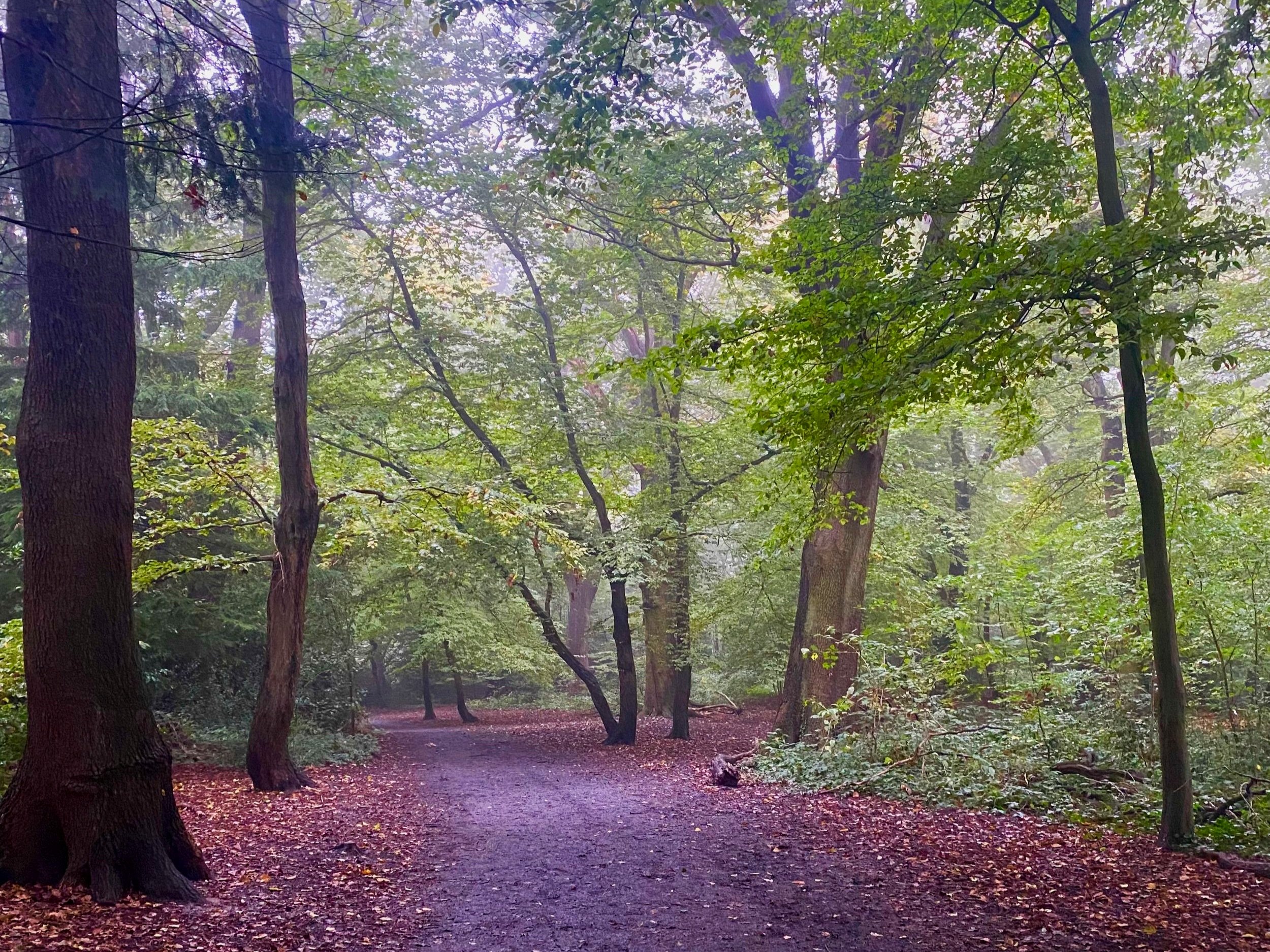Highgate Wood through the ages
The dazzling display of bright autumnal colour is a feast for the senses in Highgate Wood at this time of year. Luminous yellow hornbeam leaves carpet the ancient woodland floor, nutrient-rich red berries anticipate the return of migratory redwing thrushes, and a kaleidoscope of tentatively nibbled ‘friend or foe’ fungi can be found at every turn. It’s no wonder Heath Hands’ volunteers enjoy working in Highgate Wood so much.
A quiet day in Highgate Wood
Volunteering at Highgate Wood
Using a variety of woodland management skills, Heath Hands volunteers have been helping City of London Wood Keepers conserve this ecologically valuable woodland for years. Tasks carried out are wide-ranging and interesting - from coppicing and tree planting to habitat creation and protection - volunteers have learnt many new skills under the supervision of the experienced staff at this site.
But it’s not just the practical side of volunteering that makes it so enjoyable. The staff who oversee the volunteering sessions are hugely knowledgeable, and often take the volunteers out on impromptu rambles to learn more about the biodiversity and ecology of the ancient Wood.
In November, for example, the team learned more about the secret lives of the weird and wonderful fungi that grow in Highgate Wood, and their ecological importance to the health of the Wood’s complex web of ecosystems.
Volunteers at Highgate Wood
Highgate Wood’s history
Signs of historical coppicing in the wood
Highgate Wood has been shaped by thousands of years of human management. Once part of the Great Forest of Middlesex, this 70-acre ancient woodland (one which has existed since before 1600) was managed for its standard oaks and coppiced hornbeam to provide building materials and firewood up until around a hundred years ago.
To find out more about Highgate Wood’s history and management practices, head over to our webpage and download a detailed booklet on the history of Highgate Wood written by Michael Hammerson for the City of London.
The Roman Kiln
Highgate’s Roman Kiln
One fascinating element of historical heritage at Highgate Wood is its Roman kiln remnants: archaeological digs in the 1960s unearthed evidence of Roman activity in Highgate Wood, including ten kilns used for making pottery. Thanks to the efforts of the Highgate Roman Kiln Project, exciting developments have been taking place in 2024 after a heritage lottery bid and the creation of a ‘Firing London’s Imagination’ project.
As part of this work, the most complete kiln found at the Wood has been restored and is now on display at the Highgate Wood Information Hut near the Pavilion cafe, along with displays about the history of pottery making at the Wood. More information on this and the associated learning programme can be found on the project website.
Visiting the Wood
Highgate Wood is very easy to access, right next to Highgate underground station and along several bus routes. The paths, whilst not tarmacked, are generally flat, making a visit to the Wood easy for visitors of all ages. Download this handy map to help plan your visit. For further information on Highgate Wood, visit the City of London Corporation’s website.
To learn more about the Wood and its nature, do keep an eye on our what’s on page for upcoming nature walks led by the City of London team, or Heath Hands walk leaders.




